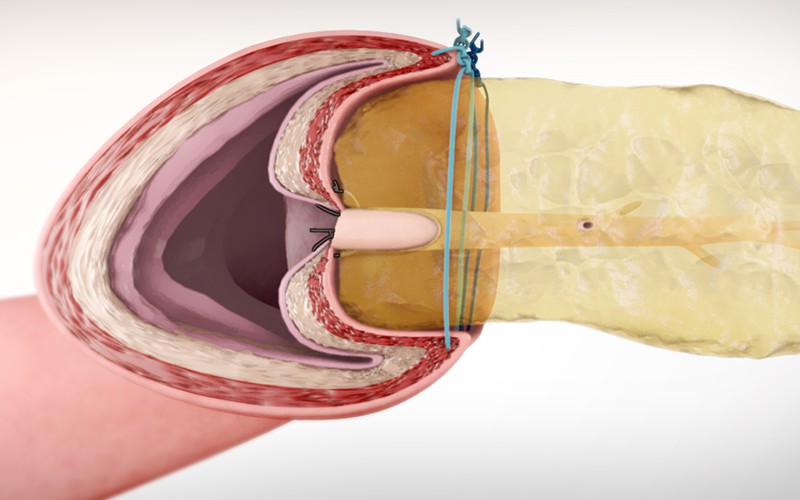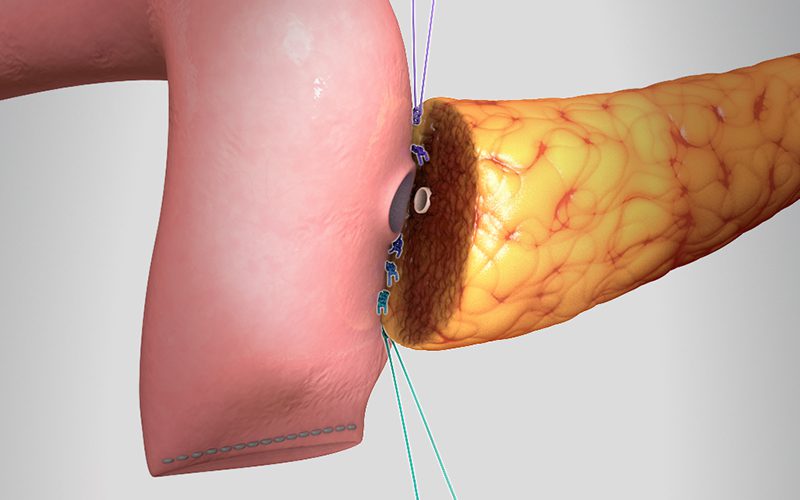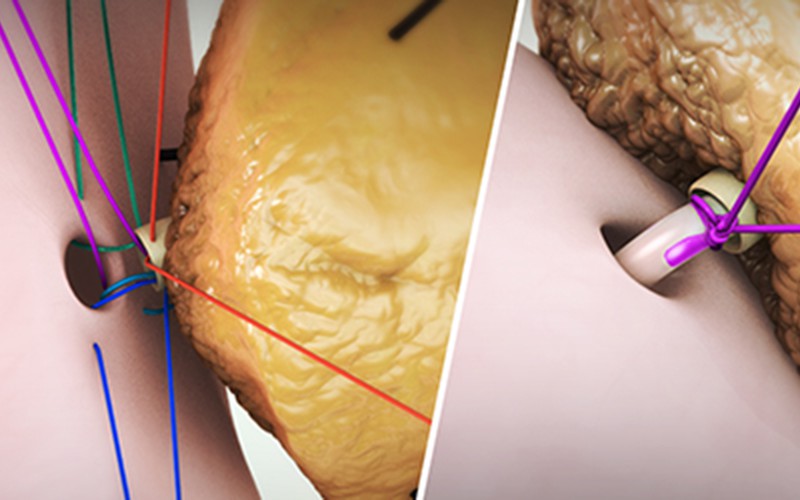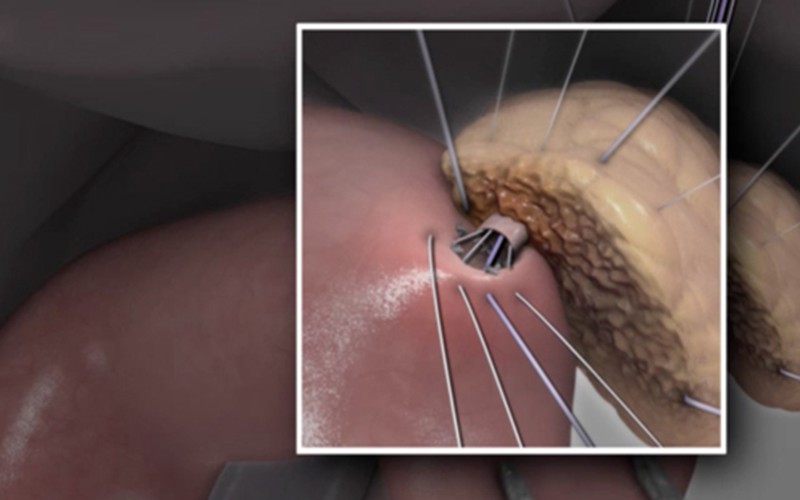Blumgart-style Pancreaticojejunostomy
Reconstruction Technique: Two-layer anastomosis without stent
00:13 TECHNIQUE OVERVIEW
02:42 TECHNIQUE FOOTAGE
Technique description
- The Blumgart-style pancreaticojejunostomy was first described by Dr. L.H. Blumgart at the Memorial Sloan-Kettering Cancer Centre in New York.
- The principle of the Blumgart-style pancreaticojejunostomy technique is to utilize trans-pancreatic sutures to create an invagination of the small bowel, which encapsulates the pancreas parenchyma, and the duct-to-mucosa anastomosis, on the anti-mesenteric side of the bowel.
- Trans-pancreatic sutures are placed through the full thickness of the pancreas, to prevent pancreas capsule tearing and relieve tension on the duct-to-mucosa anastomosis.
- A probe is inserted into the pancreatic duct when trans-pancreatic sutures are placed; this serves to protect the duct from injury.
- The duct-to-mucosa anastomosis sutures are placed in a clockface orientation, with double sutures on the 6 and 12 o' clock positions, and single sutures on the 3 and 9 o' clock position
Special acknowledgement
This video was a collaboration project with Dr. Rory Smoot and Dr. Nimesh Naik at Mayo Clinic.




